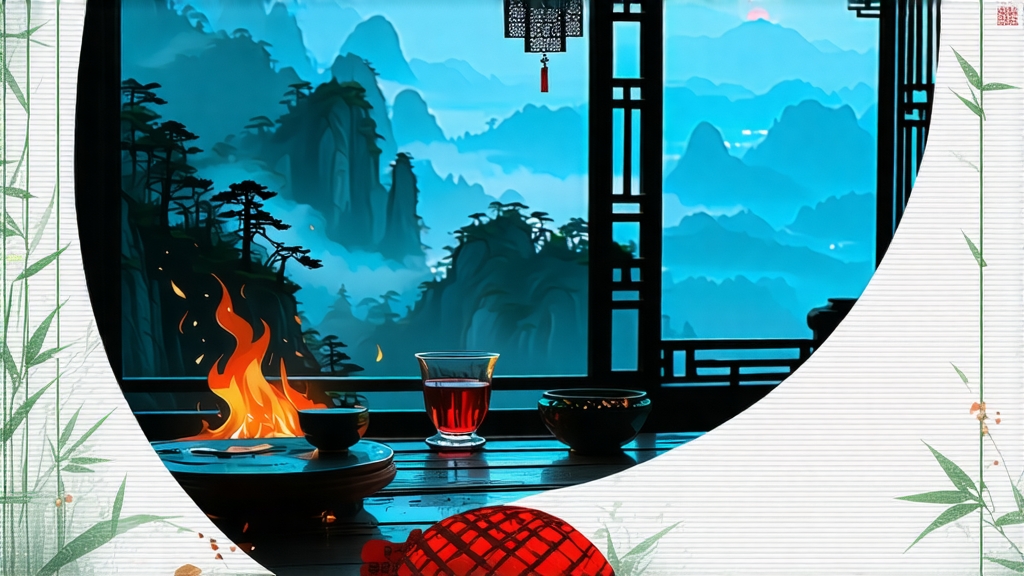
Long before Assam, Ceylon or Earl Grey entered the lexicon of tea, a small village in the Wuyi massif of north-west Fujian produced the very first fully oxidised leaf the world would come to call “black tea.” That village is Tongmu Guan, and its gift to the globe is Lapsang Souchong—an tea whose name still carries the whiff of pine smoke and the whisper of 400-year-old trade routes. To international drinkers the word “Lapsang” often evokes an aggressive campfire aroma, yet within China the same leaves can smell of longan fruit, dried lychee and honey, with only the faintest wisp of wood. Understanding why the same tea can be both subtle and swaggeringly smoky is to understand history, geography and human ingenuity intertwined in a single cup.
Historical backdrop
The year most scholars cite is 1604, when Dutch merchants first exported Song Zhong (“Song-variety”) tea from the port of Xiamen to Europe. At that time all Chinese tea was green; oxidation was considered spoilage. Legend claims that an army unit passing through Tongmu Guan commandeered the tea sheds, delaying the scheduled drying. When the farmers returned they found the leaves had turned a deep copper colour. To salvage the crop they rushed the tea over smouldering pine embers, inadvertently fixing the oxidised leaf and scenting it with resinous smoke. The Dutch loved the robust liquor, and a new category—hong cha, “red tea” in Chinese—was born. By the early Qing dynasty Lapsang Souchong had become the most expensive tea at the Amsterdam auction, outpricing even the finest green teas of the Song emperors.
Terroir and cultivar
Tongmu Guan sits inside a granite gorge at 27° N latitude, where the Wuyi Mountains trap humid monsoon clouds between 600 m and 1,200 m elevation. Day-night temperature differentials of 15 °C slow the growth of the indigenous Xiao Ye Zhong (“small-leaf species”) cultivar, concentrating amino acids and sugars. The forest is 92 % pine and cedar; bark and needles litter the ground, naturally perfuming the air and the soil. Chinese law now designates 60 km² of this ravine as a protected origin zone; leaves picked outside it may be called “Wuyi black,” but never “Zheng Shan Xiao Zhong,” the official name for authentic Lapsang Souchong.
Two styles, one leaf
- Traditional pine-smoke Zheng Shan Xiao Zhong
Fresh leaves are withered over local Masson pine fires for 8–10 hours, pan-fired at 200 °C for 90 seconds to arrest oxidation, then rolled and oxidised for 4–5 hours until 90 % of the catechins have converted to theaflavins. Finally the leaf is re-dried in bamboo baskets suspended over a gentle pinewood smoulder for another 6–8 hours. The smoke bonds with the leaf’s natural sugars, creating guaiacol and syringol—aromatic compounds that yield the signature tar, bacon and resin notes. - Unsmoked “Innovative” Xiao Zhong
Since 2005 a smoke-free version has been crafted for the domestic Chinese market. Withering is done with warm air in heated bamboo troughs; oxidation is controlled at 24 °C and 85 % humidity; drying uses electric ovens at 80 °C. The result is a tea that steeps a bright russet colour, tasting of dried longan, malt and cocoa, with a lingering honey finish. Both styles share the same cultivar and village, yet cup like distant cousins.
Craft in detail
Picking standard is one bud and two leaves, taken before Qingming when the spring bud still wears its downy cloak. Speed is crucial: the leaf must reach the shed within 45 minutes to prevent auto-oxidation. Masters judge withering by the “soft ear” test—pinching the leaf to hear a barely audible crackle. Rolling is done on 120-year-old fir-wood boards; the pressure must be firm enough to rupture cells yet gentle enough to keep the bud intact. Oxidation is monitored by scent: when the green grassy note gives way to apple and then to ripe peach, the leaf is ready